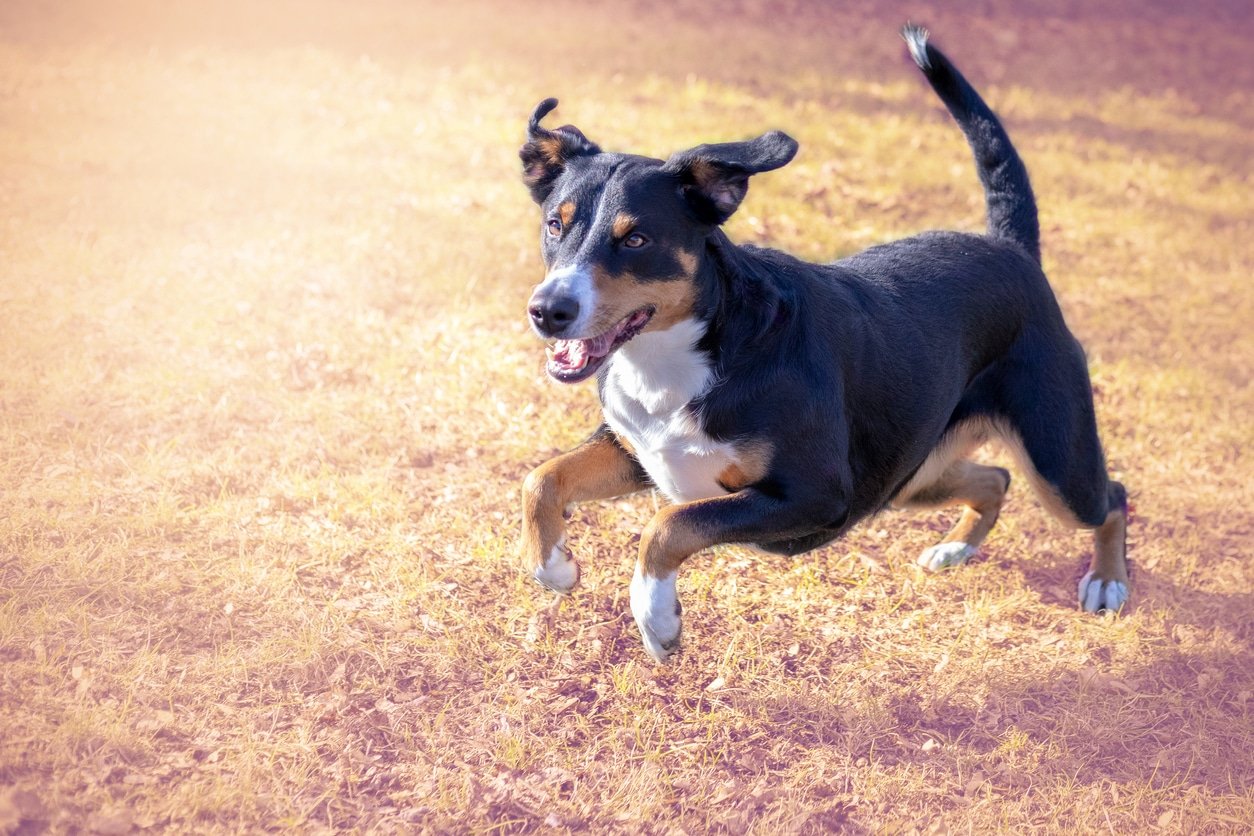Do you have a high-energy dog that seems to never run out of steam? Keeping your lively pup calm during obedience training can feel like an uphill battle.
But what if you could channel all that energy into focused, effective learning sessions? You’ll discover simple and practical ways to exercise your energetic dog so they’re ready to listen and learn. By the end, you’ll have the tools to turn your excitable companion into a well-behaved, happy dog—and enjoy the process together.
Keep reading to find out how!

Credit: www.rover.com
Choosing The Right Exercises
Choose exercises that match your dog’s energy level to keep them focused during training. Activities like fetch or agility help burn off excess energy while practicing commands. Balancing physical and mental tasks improves obedience and keeps your dog engaged.
Choosing the right exercises for your high-energy dog can be a game-changer in obedience training. You need activities that match their energy levels while teaching them discipline. Striking a balance between physical exertion and mental stimulation is key. I’ve found that my dog’s excitement for learning increases when the activities are engaging yet challenging.
Physical Activities For Energy Burn
Physical exercises are essential to tire out your energetic dog and make them more receptive to training. It’s amazing how a long run or a vigorous game of fetch can calm an otherwise hyperactive pup. Consider activities like:
- Running:Take your dog for a jog around the neighborhood or a local park.
- Agility courses:Set up a simple obstacle course in your backyard.
- Frisbee games:Engage your dog’s natural instincts with a game of catch.
These activities not only burn energy but also improve your dog’s physical fitness.
Mental Challenges To Engage Dogs
High-energy dogs thrive on mental stimulation. I’ve noticed that incorporating mental challenges into our routine keeps my dog sharp and focused. Try these engaging activities:
- Puzzle toys:Invest in toys that require your dog to think and solve problems.
- Hide and seek:Hide treats around the house and let your dog find them.
- Training commands:Teach new commands or tricks regularly.
These exercises help prevent boredom and keep your dog mentally active.
Combining Physical And Mental Workouts
Why not combine physical and mental exercises for a comprehensive workout? One method I’ve tried is integrating obedience commands into our walks. Consider these combinations:
- Fetch with commands:Before throwing the ball, ask your dog to sit or stay.
- Agility with puzzles:Include puzzle toys in your obstacle course.
- Walking with training:Practice commands like heel or stop during walks.
This approach not only tires out your dog but also reinforces obedience and listening skills. Are you ready to transform your training sessions into an exciting adventure for both you and your dog?

Credit: offleashk9nova.com
Timing And Frequency
Timing and frequency play a crucial role in exercising high energy dogs during obedience training. Proper scheduling ensures your dog stays engaged and learns effectively. It also prevents burnout and keeps both of you motivated. Understanding when and how often to exercise your dog can improve training results and behavior.
Best Times To Exercise High Energy Dogs
Early mornings and late afternoons are ideal for exercise sessions. These times avoid the heat and help your dog burn energy before training. Cooler temperatures make physical activity safer and more comfortable. Short bursts of exercise before training can sharpen focus. Avoid exercising right before meals or bedtime to prevent discomfort.
Balancing Exercise And Training Sessions
Exercise should complement obedience training, not replace it. Start with 10 to 15 minutes of physical activity to release excess energy. Follow with focused training sessions lasting 5 to 10 minutes. Use play breaks to keep your dog motivated and reduce stress. Watch your dog’s energy levels and adjust the routine accordingly. Mixing exercise and training maintains interest and improves learning.
Avoiding Overexertion
High energy dogs need plenty of exercise, but too much can cause harm. Look for signs like heavy panting, limping, or refusal to continue. Give your dog rest breaks and fresh water during sessions. Avoid intense exercise in extreme weather conditions. Gradually increase exercise duration and intensity to build stamina safely. Overexertion slows progress and may lead to injury.
Incorporating Obedience Into Play
Incorporating obedience into play makes training fun and effective. High energy dogs need both mental and physical exercise. Mixing commands with play keeps their focus sharp and energy well spent. It also builds stronger bonds between you and your dog.
Using Commands During Active Play
Use simple commands while your dog is playing. Say “sit” or “stay” before throwing a ball. Ask for “come” when calling your dog back. This teaches your dog to listen even when excited. Short, clear commands work best. Praise your dog when they obey quickly.
Games That Reinforce Training
Choose games that include obedience skills. Try fetch with a “drop it” command. Play hide and seek using “stay” and “find me.” Tug-of-war can end with a “leave it” command. These games make learning natural and fun. They keep your dog’s mind busy and body active.
Reward-based Motivation
Use rewards to motivate your dog during play. Treats, toys, or praise work well. Give rewards right after your dog obeys a command. This helps your dog connect good behavior with rewards. Keep rewards small and frequent. It keeps your dog eager to learn more.
Equipment And Tools
Choosing the right equipment and tools helps manage your high-energy dog during training. The correct gear keeps your dog safe and focused. It also supports effective communication between you and your pet. Use equipment designed to handle strong, active dogs. Quality tools make training easier and more fun.
Leashes, Harnesses, And Training Aids
Strong leashes prevent sudden pulls and escapes. Look for durable materials like nylon or leather. Harnesses distribute pressure evenly, reducing strain on your dog’s neck. Front-clip harnesses help control pulling better. Training aids such as clickers and treat pouches reinforce good behavior. They keep your dog motivated and attentive.
Toys That Stimulate Energy
Interactive toys challenge your dog’s mind and body. Puzzle feeders slow down fast eaters and engage the brain. Fetch toys like balls and frisbees encourage running and jumping. Tug toys build strength and provide a good outlet for energy. Rotate toys regularly to keep your dog interested and active.
Safe Outdoor Gear
Outdoor gear protects your dog during active sessions. Reflective collars and leashes improve visibility in low light. Boots shield paws from rough terrain and hot surfaces. Cooling vests help dogs stay comfortable in warm weather. Always check gear fit to avoid discomfort or injury.
Adapting To Your Dog’s Needs
Understanding your high-energy dog’s unique needs is crucial during obedience training. Each dog has its own limits and preferences that affect how they respond to exercise and learning. Paying close attention to your dog’s cues not only keeps training safe but also makes it more effective and enjoyable for both of you.
Recognizing Signs Of Fatigue
Dogs don’t always tell you when they’re tired, but their bodies show it clearly. Watch for heavy panting, slowing down, or loss of focus during exercises. If your dog starts to lag or seems disinterested, it’s a good moment to pause or switch to a less demanding activity.
Early recognition prevents overexertion and keeps your dog eager to train next time. Have you noticed your dog’s unique way of signaling tiredness?
Adjusting Intensity Levels
Not every training session needs to be high energy. You can mix high-intensity bursts with calm, focused obedience drills to maintain your dog’s enthusiasm. Try shorter, more frequent sessions rather than long, exhausting ones.
Adjust exercises based on how your dog reacts. If they’re too hyper or too sluggish, tweak the pace or activity type. This flexibility helps maintain progress without causing stress.
Tailoring Exercises By Breed And Age
Different breeds have varying stamina and energy requirements. A Border Collie may thrive on long runs and complex commands, while a Bulldog might need gentler, shorter sessions. Age also matters—puppies and senior dogs require lighter, shorter exercises.
Consider your dog’s breed traits and life stage to choose the right mix of physical and mental challenges. Are you customizing your training plan to fit your dog’s breed and age, or using a one-size-fits-all approach?
Consistency And Patience
Consistency and patience are the backbone of exercising and training high-energy dogs. Without steady effort and calm persistence, your dog can become frustrated or overstimulated, making training less effective. Staying consistent helps your dog understand what you expect, while patience allows both of you to grow through challenges.
Building A Routine
Create a daily schedule that balances exercise and obedience training. Dogs thrive when they know what to expect, so set specific times for walks, play, and training sessions.
Start with short, focused training periods. High-energy dogs can lose attention quickly, so frequent, brief sessions work better than long ones.
Consistency in commands and rules is crucial. Use the same words and gestures every time to avoid confusing your dog.
Tracking Progress
Keep a simple journal or use an app to note your dog’s behavior and response to training exercises. This helps you see what works and what needs adjusting.
Celebrate small wins, like improved focus or successful obedience during high-energy moments. These milestones motivate you to keep going.
Ask yourself: Is your dog showing signs of improvement in self-control? Tracking this can guide how you tweak your routine.
Dealing With Setbacks
Expect some tough days—your dog might ignore commands or get overly excited despite training. This doesn’t mean failure; it means you need to adjust your approach.
When setbacks happen, stay calm and avoid punishment. High-energy dogs respond better to positive reinforcement and gentle correction.
Reflect on what triggered the setback. Was your dog tired, distracted, or overwhelmed? Identifying triggers helps you prevent future problems.

Credit: pupford.com
Frequently Asked Questions
How Can I Exercise High Energy Dogs Effectively?
Exercise high energy dogs with structured activities like obedience training, agility drills, and fetch. These keep their mind and body active, reducing destructive behavior. Consistent sessions help channel energy positively while reinforcing commands and focus.
What Are The Best Obedience Training Tips For Energetic Dogs?
Use short, engaging training sessions to maintain focus. Incorporate rewards and play breaks to motivate your dog. Consistency, patience, and clear commands are key to managing high energy during obedience training.
How Often Should I Exercise My High Energy Dog Daily?
High energy dogs benefit from at least 60 to 90 minutes of exercise daily. Split this into multiple sessions including walks, training, and playtime. Regular exercise helps manage energy and improves obedience training outcomes.
Can Obedience Training Tire Out Energetic Dogs Mentally?
Yes, obedience training challenges a dog mentally, which can tire them out effectively. Mental stimulation is as important as physical exercise for high energy dogs. It improves focus, reduces hyperactivity, and strengthens the bond between dog and owner.
Conclusion
Exercising high-energy dogs during obedience training keeps them focused and calm. Short, active sessions help burn excess energy and improve learning. Use toys and treats to keep your dog interested. Consistency and patience build better habits over time. A tired dog listens better and behaves well.
Keep training fun and clear for best results. Your dog’s energy will become a positive force in training.







